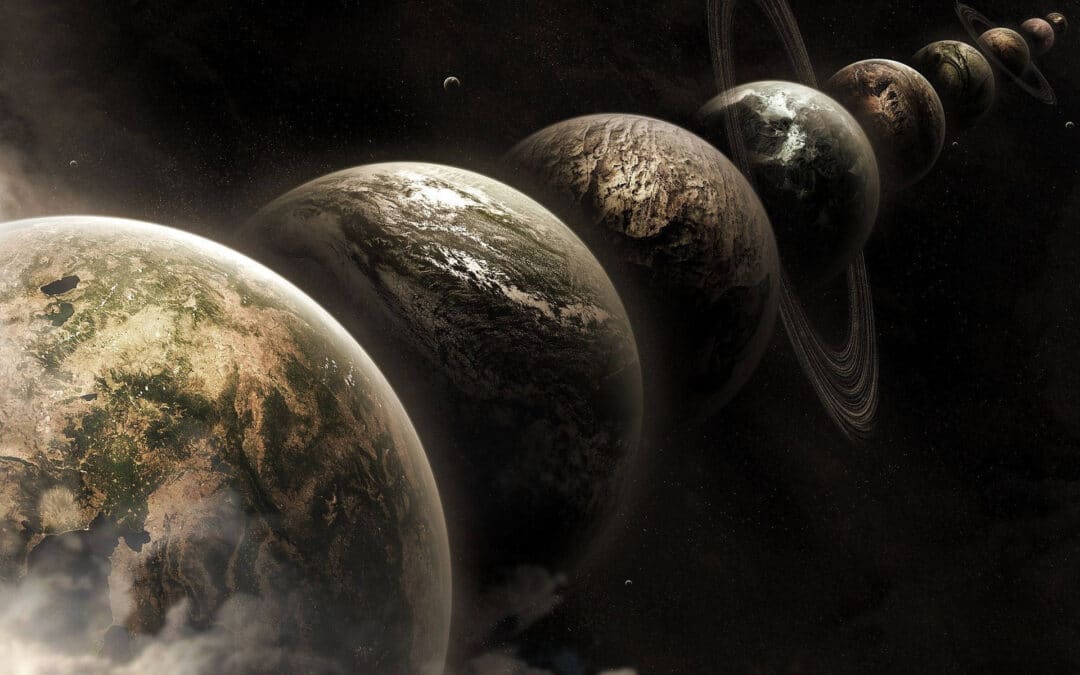The concept of the multiverse takes us on a journey beyond the familiar confines of our universe, into a realm where the possibilities are as vast as the cosmos itself. This idea, which seems lifted straight from the pages of science fiction, has in recent years found a foothold in the scientific community. With the multiverse theory, scientists propose the existence of multiple, perhaps an infinite number of universes, each with its own set of physical laws and constants.
What is the Multiverse Theory?
The multiverse theory suggests that our universe is not singular but rather one of many universes, each differing in various ways. This theory is not just a single hypothesis but a framework composed of various theories suggesting different types of multiverses. From quantum mechanics to inflation theory and string theory, the multiverse is a central theme that attempts to answer some of the most perplexing questions about the nature of our reality.
Scientific Basis for the Multiverse
The seeds for the multiverse theory are found in inflation theory and quantum mechanics. The theory of inflation, which describes the rapid expansion of the universe moments after the Big Bang, suggests that this inflationary phase did not occur uniformly. In some regions, inflation may have ended, giving rise to bubble universes, while in others, it continues even now. This model leads to the possibility of an endless sea of universes within a grand cosmic landscape.
Quantum mechanics adds another layer to the multiverse theory through the concept of quantum superposition and entanglement, suggesting that for every decision made, there could be a universe where an alternate choice was pursued. Additionally, string theory proposes a vast landscape of possible universes, each with its own set of physical laws derived from different configurations of string vibrations.
Exploring Parallel Universes
The allure of parallel universes extends beyond the silver screen into the domain of serious scientific speculation. Scientists ponder whether it might be possible for these universes to interact or even influence one another. While the idea of traveling between these universes remains firmly in the realm of science fiction, the pursuit of understanding whether we are part of a much larger multiverse continues to inspire both scientists and storytellers alike.
Evidence of the Multiverse
While direct evidence of the multiverse remains elusive, several indirect pieces of evidence could suggest its existence. These include peculiarities in the cosmic microwave background radiation, the distribution of dark matter, and theoretical predictions from models of inflation and string theory. Scientists also look for signs of collisions between our universe and others in the cosmic microwave background, which could manifest as unusual patterns or anomalies.
Challenges in Proving the Multiverse
One of the most significant challenges in proving the multiverse theory lies in the nature of the evidence. The universes within the multiverse are thought to be beyond our observable universe, making direct observation impossible with current technology. This has led to a debate within the scientific community about the falsifiability and scientific validity of the multiverse theory. Nonetheless, advancements in theoretical physics and cosmology may one day provide the means to test for the presence of other universes.
Implications of the Multiverse Theory
The philosophical and scientific implications of the multiverse theory are profound. If multiple universes exist, it challenges our understanding of reality and our place within it. It raises questions about determinism, free will, and the uniqueness of our universe. The multiverse theory also provides a possible explanation for why our universe appears to be fine-tuned for life, a question that has puzzled scientists and philosophers for decades.
Future of Multiverse Research
The exploration of the multiverse remains at the cutting edge of cosmology and theoretical physics. Future research may uncover new mathematical models or evidence that could either support or refute the existence of other universes. As our understanding of the universe’s fundamental nature deepens, so too will our grasp of the potential reality of the multiverse.
Navigating the Unknown: A Conclusion
The journey into the concept of the multiverse takes us to the limits of our understanding, challenging us to question the very nature of reality. While the theory remains speculative, it opens a window to a myriad of possibilities that stretch the imagination and fuel scientific inquiry. As we continue to explore the cosmos, the idea of the multiverse reminds us that the mysteries of the universe are far from resolved, offering endless opportunities for discovery and wonder.
Key Takeaways from Our Journey Through the Multiverse
- The multiverse theory posits the existence of multiple, possibly infinite, universes.
- Scientific interest in the multiverse is spurred by developments in inflation theory, quantum mechanics, and string theory.
- Direct evidence of the multiverse remains elusive, with research focused on indirect indicators.
- The concept of parallel universes challenges our understanding of reality and prompts philosophical and scientific debates.
As we navigate the complexities of the multiverse, we’re reminded of the vastness of the unknown. Our universe, with its myriad galaxies and unfathomable depths, might just be a single thread in an intricate cosmic tapestry. The pursuit of knowledge about the multiverse not only expands our understanding of the cosmos but also challenges us to rethink our place within it.
In exploring the multiverse, we venture into the realm of the unknown, where each discovery holds the potential to alter our understanding of reality. The journey is fraught with challenges, but the rewards – a deeper comprehension of the cosmos and our place within it – are immeasurable. As researchers continue to explore the theoretical underpinnings and empirical evidence of the multiverse, we stand on the brink of potentially groundbreaking discoveries that could redefine our understanding of the universe and its many mysteries.
Frequently Asked Questions
- What is the multiverse theory? The multiverse theory suggests the existence of multiple, possibly infinite, universes beyond our own, each potentially with its own set of physical laws and constants.
- Is there any scientific evidence for the multiverse? Direct evidence for the multiverse is currently lacking, but indirect evidence and theoretical models provide a foundation for the theory’s plausibility.
- Can we ever visit another universe? With current scientific understanding and technology, visiting another universe remains impossible. However, the idea continues to inspire theoretical exploration and science fiction.
- How does the multiverse theory impact our understanding of the universe? The multiverse theory challenges traditional views of the cosmos, suggesting that our universe may be just one of many, which has implications for our understanding of physics, cosmology, and the nature of reality itself.
- What future research could prove the multiverse theory? Future research could include finding specific patterns in the cosmic microwave background radiation, anomalies in the distribution of matter in the universe, or developing new theoretical models that offer testable predictions about the multiverse.




